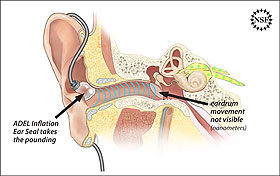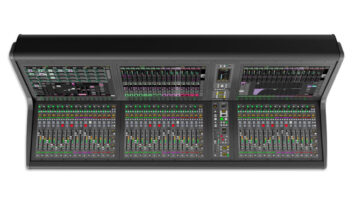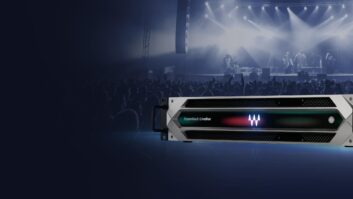
The ADEL, which looks like a tiny ear-sealing balloon, is a sacrificial membrane that disrupts excessive pressure waves, protecting the ear drum when in-ear listening devices are used.
At the 130th AES convention (London, May 14), in-ear technologist Stephen Ambrose, along with Robert Schulein and Samuel Gido, entered two papers and a presentation that described a potential solution to “listener fatigue,” the discomfort and pain experienced while using in-ear headphones, hearing aids and other devices that seal the ear canal from external sound. Under their Asius Technologies brand name, they described how sealing a speaker in the ear canal dramatically boosts sound pressures and how a modified ear-tip can help alleviate, or even eliminate, that effect.
Using physical and computational models, the researchers showed that sound waves entering a sealed ear canal create an oscillating pressure chamber that can produce a potentially dramatic boost in SPLs. Data from the models and laboratory observations suggest that the boost triggers an acoustic reflex, a defense mechanism in the ear that dampens the transfer of sound energy from the eardrum to the cochlea by as much as 50 dB, but does not protect the ear drum from the excessive shaking.
To counter the oscillations, the team developed a way to use a membrane outside the eardrum to take the brunt of all the pounding. This “sacrificial membrane” disrupts the excessive pressure waves, protecting the eardrum and preventing the triggering of the acoustic reflex, ultimately leading to lower, safer listening volumes.
The papers describe two approaches for introducing the new technology. The simplest involves a retrofit that can be applied to existing in-ear headphones. Asius also developed a small, inflatable seal called an Ambrose Diaphonic Ear Lens (ADEL™), which uses a miniaturized technology called an Asius Diaphonic Pump™ to inflate the polymer membrane. Scroll below for video examples.
Video: Introducing The Ambrose Diaphonic Ear Lens and How It Works
Video: NSF Animated Illustration ADEL







